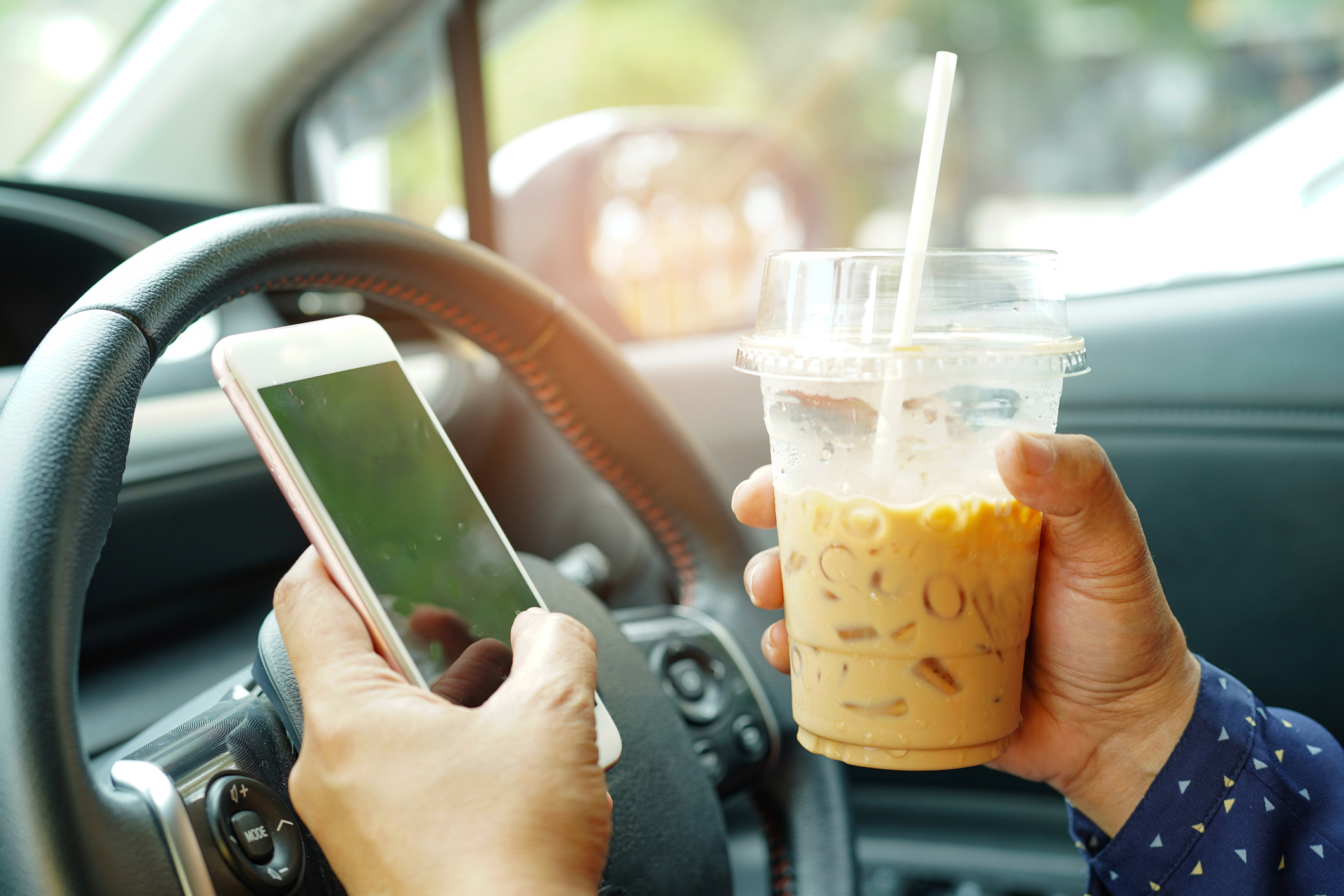Mobile Phones, Children, Tooth Flossing and Make-Up Application – AA Ireland survey highlights sources of distraction for Irish motorists
-
12% use a handheld phone, 9% send a text and 6% use a smartphone to look up the internet while driving
-
3% have reported brushing their hair and 2% reported putting on make-up.
-
52% find children distracting when driving
-
54% admit to eating or drinking a non-alcoholic beverage while driving
-
32% say they are a ‘back seat driver’ when travelling with a partner/spouse
AA Ireland’s recent poll of over 5,000 motorists examined the issue of driver distraction. Whether it is driving with children, back-seat drivers (back seat driver refers to a passenger who gives the driver unwanted advice) or personal grooming when behind the wheel, AA Ireland reveal how common these activities really are.

Asian lady holding ice coffee and mobile phone at car to communication with friends in happy hot holiday.
“Driver distraction is any activity that causes you to take your eyes, hands or mind away from driving. When distracted, your reaction time can double which significantly increases your chance of having a collision. While you can’t control distractions outside your vehicle, you can control what goes on inside,” says Anna Cullen from AA Ireland.
According to a survey of 5,304 motorists, 50% of respondents find ‘back-seat drivers’ distracting when driving.
1 in 5 drivers said they were ‘rarely’ distracted, while 30% said they do not find them distracting.
Motorists admitted to being a back-seat driver with someone they rated as a poor driver (50%), a driver they know to be inexperienced (43%), their spouse or partner (32%) and least likely with a parent (20%).
“While you might be trying to help, you most likely are not. You are potentially causing the driver to take their eyes off the road, causing them to do more sudden manoeuvres and generally sending their frustration levels through the roof,” says Anna Cullen.
“Unless it’s an emergency, our advice is to stay silent, push your foot on that imaginary brake pedal if you need to and then offer your advice once you’ve pulled in,” adds Cullen.
Meanwhile, 52% of respondents find children distracting when driving. 26% ‘rarely’ find them distracting, while 22% ‘never’ find them distracting.
2% of motorists say they were involved in a collision or near-miss while attending to a child in the car in the past year.
“Kids can be very distracting when you’re driving. Driving takes total concentration so if you are having difficulty then we encourage all drivers to indicate and pull into the hard shoulder or a suitable space at the side of the road if a child in the back of the car requires urgent assistance,” says Anna Cullen.
The AA Ireland poll also reports that 54% of motorists admit to eating or drinking a non-alcoholic beverage while driving in the past year.
Of the 5,304 motorists who participated in the poll, 12% admitted to using a handheld phone, 9% sent a text and 6% used a smartphone to look up the internet.
Another worrying self-inflicted driving distraction highlighted during the AA poll was personal grooming. 3% admitted to brushing their hair while driving, 2% admitted to putting on make-up, and 1% flossed their teeth. At 100km/h, a motorist will travel over 55 metres in just 2 seconds.
For more information go to: https://www.theaa.ie/blog/